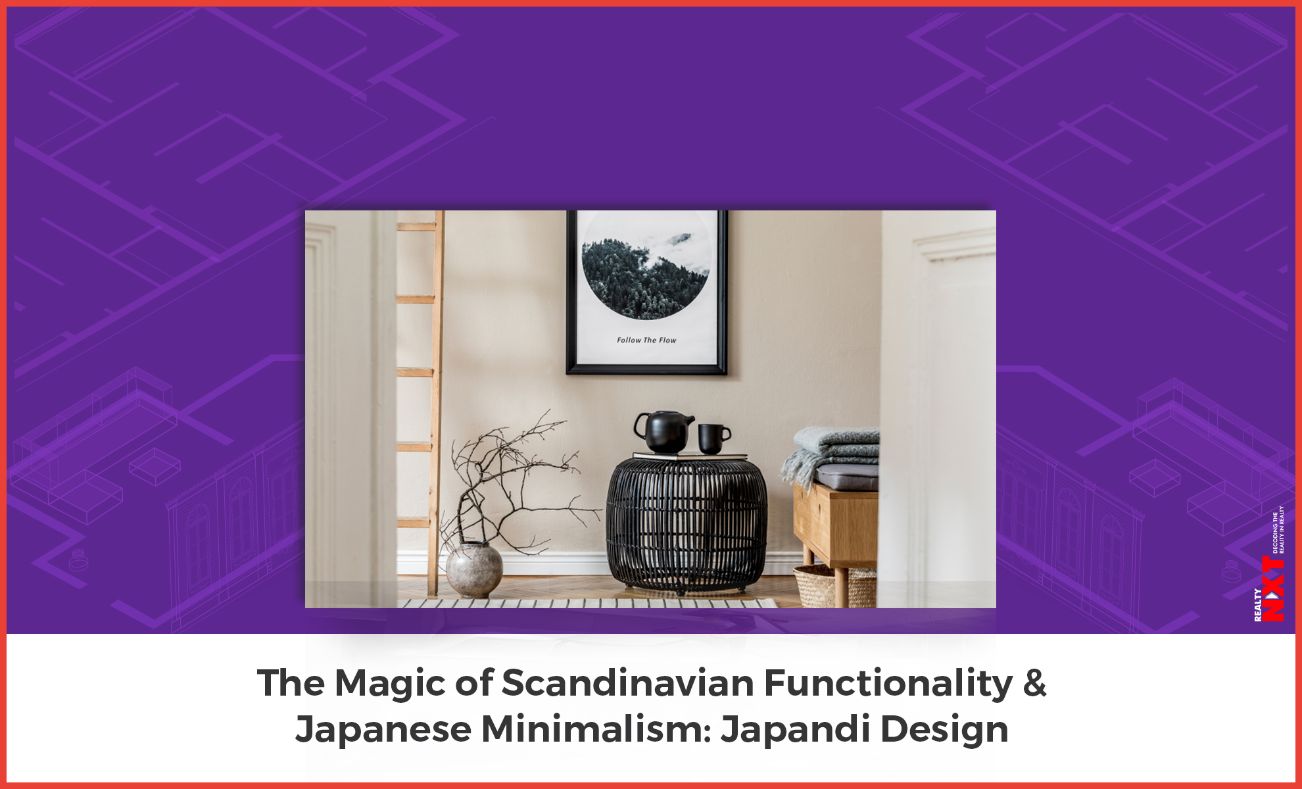If you’ve been finding the stress of everyday life weighing you down, it might be time to take a step back and reinvent your life.
Meaningful lifestyles are now trending, with people everywhere looking to connect with their inner Zen. Before it’s too late, make a conscious effort to disconnect from the frenzy of work pressures, where conference calls and impossible-to-handle goals take precedence over simple living!
Looking to find that perfect balance of mind, spirit and body? Start with your home décor! Popular this season, Japandi design combines the magic of Scandinavian functionality and Japanese minimalism, and exudes calm, peaceful ways of living. Following this fusion of cultures is meaningful and healthy, and has the transformational potential to turn your life around.
Here’s how you can infuse the spirit of Japandi into your home interiors to create balance and harmony in your life!
The Cosy Comfort of Hygge
While minimalism décor leans toward the stark and austere, Scandinavian sensibilities infuse it with a sense of ‘hygge’: defined as a characteristic of cosiness and comfort, that creates an air of well-being. The best of both worlds, and what could be better that that?
Pile on the cushions, and add layers of texture with lovely hand-crafted throws. Contentment is what we need!

Ikebana’s Fluid Lines
The Japanese art of flower arrangement is beautifully simple and whimsical, underlining the concept of ‘less is more’. Creative Japandi arrangements emphasize flowing forms and even use bare branches, stems and twigs in a harmonious composition where blank spaces are as important as filled forms.
Try your hand at a minimalist ikebana arrangement that is a work of art in itself.

The Perfect Balance or Lagom
Another term from the Scandinavian lexicon, ‘lagom’ is all about something that is just enough: not too much, nor too little. Perfectly balanced interiors that hit the sweet spot between practicality and aesthetics have plenty of ‘lagom’.
This sofa combines functional seating, with a lovely mix of pretty cushions, epitomising this Swedish concept perfectly.

Low, Clean Lines
Both Scandinavian and Japanese styles use neutral colours and natural materials, but Japanese furniture stands apart in that it favours low heights, with seating and beds being on the floor or floating just above.
This Zen bedroom skilfully blends both themes—the interplay of textures that is favoured by Scandinavians in the pendant light and furnishings, with a low lying, minimalistic floating bed that is reminiscent of the Japanese style.

A Play on the Lighting
Lighting plays a core role in this décor aesthetic. While Scandinavian design favours large windows that flood the room with natural light, Japanese homes filter the light through shoji screens and bamboo latticework.
Blend the two styles by using lattice work on large windows, like this clever designer has done! The parallel lines of the window lattice are reflected in the Scandinavian-style chair in the foreground.

The Perfection of Imperfection: Wabi Sabi
In Japanese culture, Wabi Sabi is a world view that talks about accepting imperfections in order to be at peace with oneself. Asymmetry, rough textures, and the uniqueness of misshapen objects are core to this theme.
To go with this concept, embrace asymmetry, and look for beauty in authenticity. Weathered, lived in materials and the imperfections of handcrafted objects enhance the wabi-sabi of your spaces. Accept, and let go!

Connection with Nature
Japanese and Scandinavians share their inherent love of nature, and spaces that blend the indoors with the outdoors are much loved by both. Large windows that open to the garden, indoor courtyards or terrace gardens are a definite yes for this décor style.
This spa-style bathroom comes with its own private garden, with one entire glass wall opening out to courtyard views.

How to Recreate the Japandi Look in Your Home
- Scandinavian décor prefers a soft colour palette, with a white or pale cream background and minimal use of colours. Japanese design uses black or red highlights, so to create an element of contrast you could try a black, white, and blonde wood coloured theme.
- Declutter your home, paring down all your belongings and keeping only the essentials; minimalism is at the core of both these cultures.
- Look for sustainable fabrics and furniture. Let the raw essence of the material shine through: furniture with wooden grains that are visible and not laminated, and plain fabrics with raw textures are preferred over heavily coloured or printed material.
- Japandi design is minimal, but without being cold. Add handmade craftwork for a warm, personalised touch. For instance, Washi paper lanterns with hand-painted cherry blossoms would add the traditional oriental touch.
- Embrace greenery in all its forms. Vertical greenery, rock gardens with cascading waterfalls, large indoor potted plants, and bonsai arrangements on desktops all serve to forge an all-important connect with nature.
- Accessories must always have utility. Avoid embellishments that do not have a purpose.
The marriage of two rich cultures, Japandi captures the essence of Scandinavian flair and the timeless traditions of the Japanese. While both themes have a common thread of minimalism running through them, what makes this interplay interesting is the subtle differences between the two. Finding the perfect balance between a minimal space and one that is warm, cosy and welcoming is key to nailing this lovely aesthetic.
By Dipti Das, AVP- Design, Homelane
DISCLAIMER: The views expressed are solely of the author and RealtyNXT.com does not necessarily subscribe to it. RealtyNXT.com shall not be responsible for any damage caused to any person/organisation directly or indirectly.
ALSO READ: Home Decor Ideas And Tips To Celebrate Birthdays And Festivals During The Lockdown





























